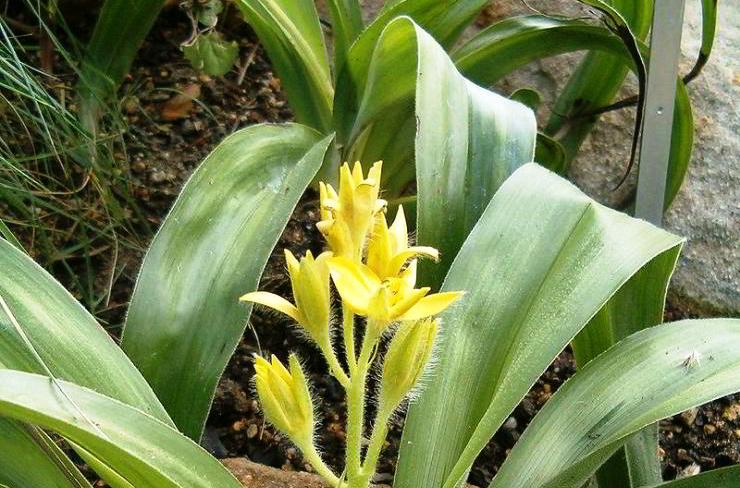The Hypoxis genus – comprising various species such as Hypoxis interjecta, Hypoxis multiceps, Hypoxis nyasica, Hypoxis obtusa, Hypoxis sobolifera, and the prominent Hypoxis hemerocallidea – holds significant importance in traditional medicine across the Southern African region. As part of the larger Hypoxidaceae family, encompassing eight genera and approximately 130 species, these plants have long been revered for their medicinal properties.
Taxonomically classified within the Hypoxidaceae family, the genus name originates from the Greek words hypo (below) and oxy (sharp), alluding to the pointed base of its ovary. Recently, this plant has attracted increased attention from researchers due to its promising medicinal benefits.
Commercially recognised as African Potato and often hailed as the “miracle plant”, Hypoxis hemerocallidea boasts distinctive features, including strap-shaped leaves arranged on thick green hairy stems, which remain unbranched. These stems bear stalks supporting 2–12 striking yellow, star-shaped flowers, adding to the plant’s allure.
Thriving in the wild, the African Potato is most prevalent in Southern Africa, spanning regions from South Africa to Mozambique and Zimbabwe, extending into East Africa. Its easily identifiable features, including bright yellow flowers and green strap-like leaves, make it a recognisable and cherished plant in its native habitats.
The tuberous part of Hypoxis hemerocallidea is believed to harbour bioactive compounds, making it a focal point in traditional medicine. For centuries, the African Potato has been utilised across folk medicine traditions to address a wide array of ailments, including arthritis, diabetes mellitus, high blood pressure, and cancer.
Beyond its traditional applications, contemporary research continues to unveil the potential medicinal benefits of the African Potato. Its bioactive compounds have piqued the interest of scientists and health enthusiasts alike, sparking further investigation into its pharmacological properties and potential therapeutic uses.
The tuberous rootstock, or corm, of the African Potato holds a prominent place in traditional medicine. The leaves are arranged neatly in three ranks, displaying a broad and stiff structure tapering towards the tips. The lower surface of the leaves is adorned with dense white hairs, adding to the plant’s distinctive appearance.
Hypoxis hemerocallidea has been deeply ingrained in traditional medicine practices for centuries. As awareness grows regarding the significance of traditional medicine, herbs like African Potato have garnered considerable attention from both commercial and scientific perspectives. The tuberous corm, esteemed for its believed bioactive compounds, forms the foundation of its medicinal applications.
In folk medicine traditions, the African Potato has been employed to treat a diverse range of ailments, including arthritis, diabetes mellitus, high blood pressure, and cancer. Beyond its traditional use, it has gained popularity in modern herbal medicine and commercial markets. A variety of products derived from Hypoxis hemerocallidea, including creams, capsules, tinctures, and tonics, cater to a wide range of health needs. Extracts from the corm are used to prepare decoctions, which serve as tonics against wasting diseases, tuberculosis, testicular tumours, various cancers, and HIV/AIDS.
In some cultures, the African Potato is employed to treat ailments such as insanity, barrenness, nightmares, intestinal parasites, urinary infections, and cardiac diseases. In contemporary usage, it is valued for its immunity-boosting properties, making it a popular choice for enhancing immune function, particularly in managing conditions like HIV/AIDS and cancer. Indeed, the African Potato is especially esteemed for its ability to bolster the immune system in individuals grappling with cancer and HIV/AIDS.
Moreover, the African Potato finds application in alleviating headaches, dizziness, prostate hypertrophy, burns, and ulcers. Its renown in South Africa under the misapplied name “African Potato” underscores its widespread recognition and prominence in the realm of traditional medicine. Weak infusions and decoctions of the corm are used as strengthening tonics during convalescence, against tuberculosis and cancer, and for addressing prostate hypertrophy, urinary tract infections, testicular tumours, and intestinal worms.
Furthermore, it is employed to manage anxiety, palpitations, depression, and rheumatoid arthritis. It is often promoted as an alternative medicine treatment for benign prostatic hyperplasia due to its purported efficacy in managing the condition.
In conclusion, Hypoxis hemerocallidea, or African Potato, represents a treasure trove of traditional medicinal knowledge and botanical diversity. Its longstanding use in traditional medicine, coupled with ongoing scientific inquiry, underscores its significance in promoting health and well-being. From its tuberous roots to its vibrant yellow flowers, the African Potato continues to captivate the imagination and offer hope for holistic healing in Africa and beyond.
(Richard Komakech – CC BY-SA 3.0/BotBln)







